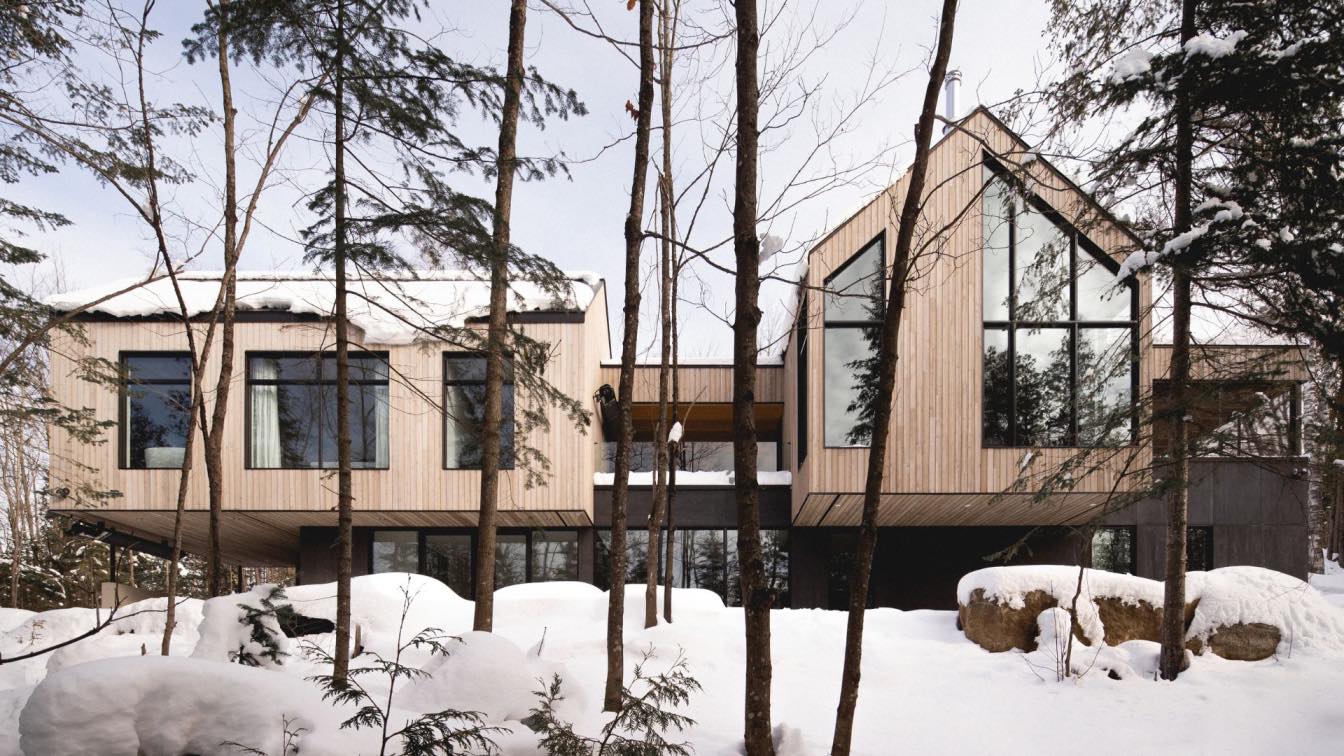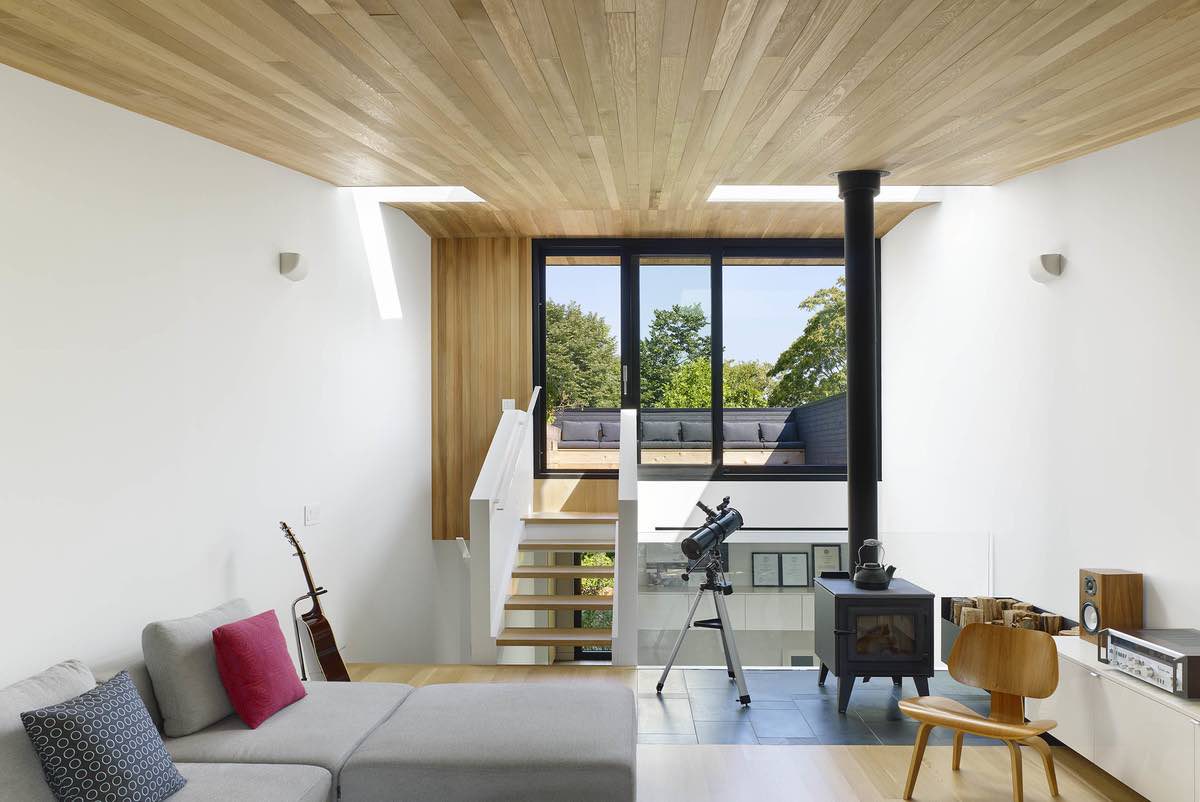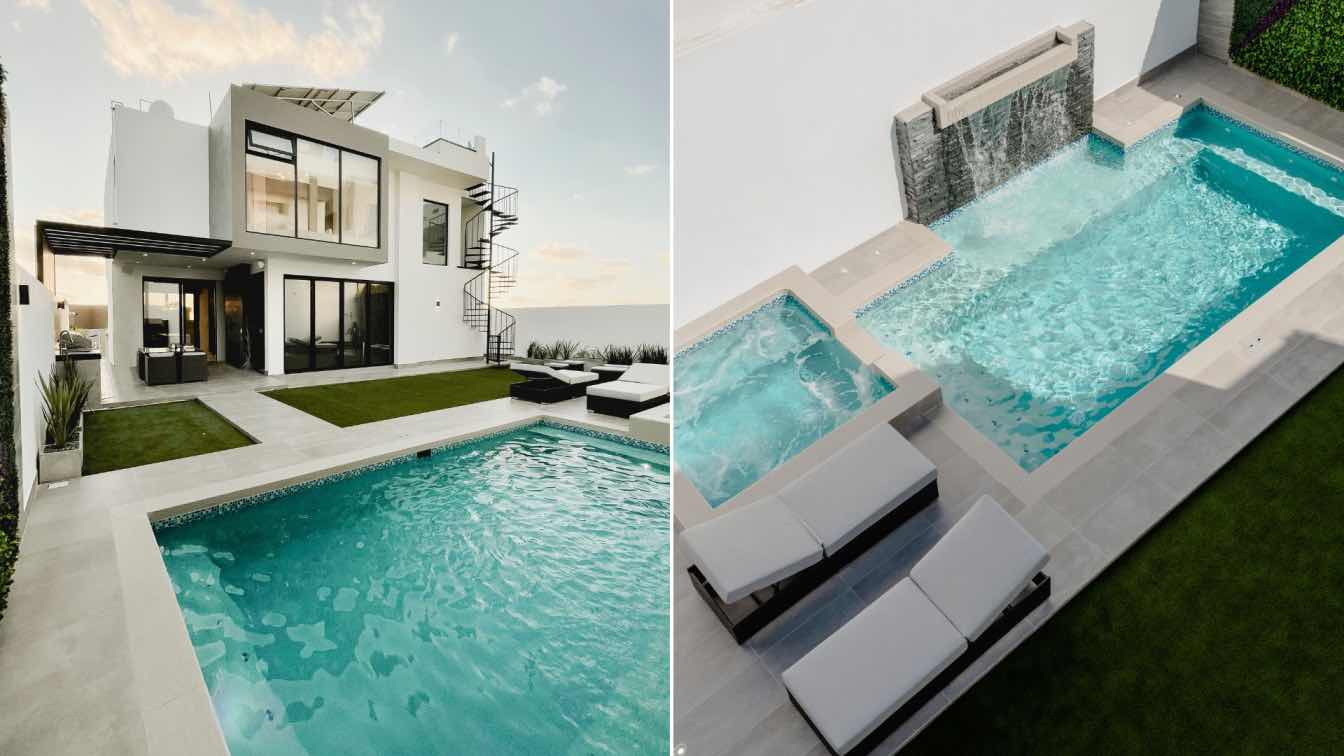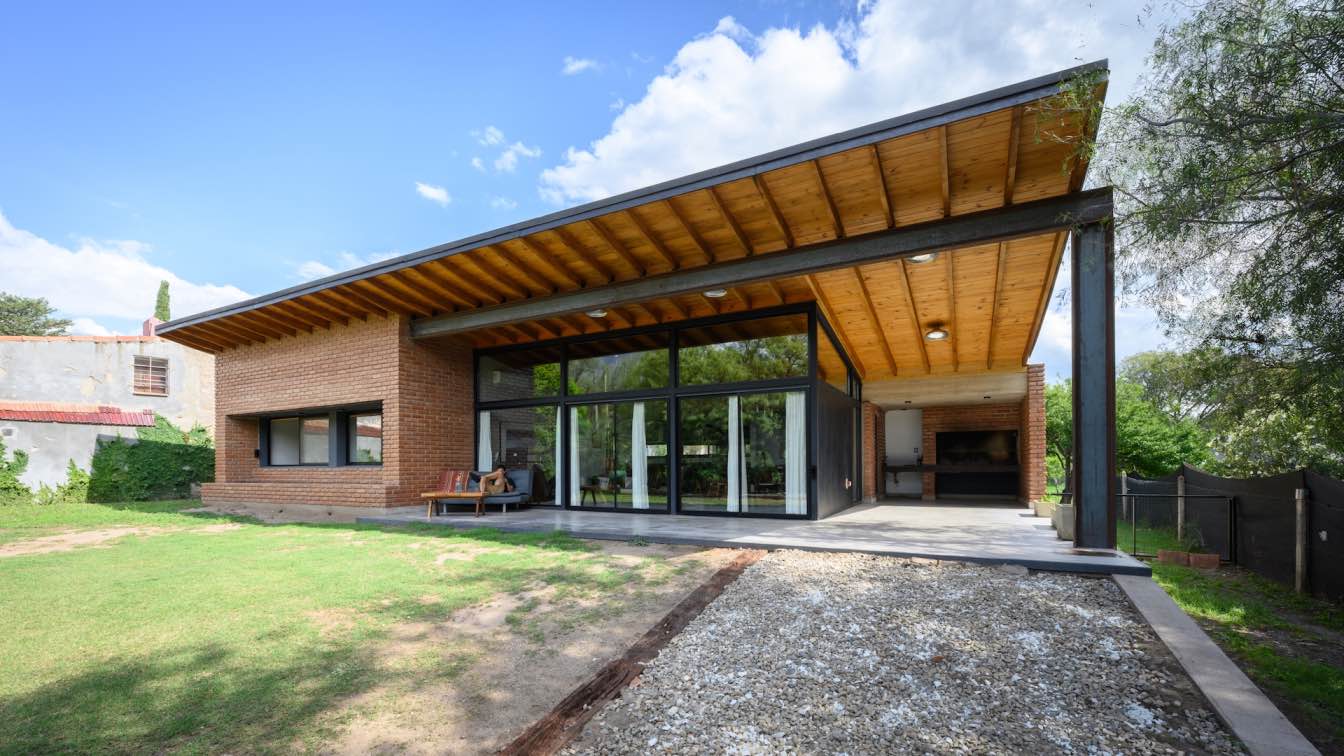Atelier BOOM-TOWN: Taking advantage of a site on the edge of a Laurentian lake, this residence is anchored and embedded on a sloping lot. The deployment of the volumes allows for a varied relationship with the landscape, offering panoramic and plunging views of the lake, as well as interesting views of a tree, a wooded area, or the rocky cliff. It serves as a real observation post of its environment, providing both general views and close-ups. Three main volumes, each with a classic typology and a gable roof, house the core of the architectural program, recalling the rural constructions of a bygone era. Like those buildings, these are lined with oxidized cedar boards.
The roof of the spaces linking this volumetric composition is flat. Its structure in glued laminated timber beam is exposed, forming the spaces of the course, the movement, and the circulation. From there, and through movement, there are connections to the site from east to west, from north to south, and from the rock of the cliff to the sky through the nearby canopy of cedars. There, a space of perception of the place offers multiple orientations and a diversification of points of view. These voids extend into a panoramic terrace to the south, and a loggia to the west, allowing occupants to access outdoor spaces close to the living spaces on the upper level, thus diversifying their experience of the place and enhancing their relationship with the immediate environment.

Two of the volumes are projected onto the slope leading to the lake below. The protected spaces below house outdoor terraces on a natural plateau, offering yet another new experience in tune with the environment. Despite a dense cover of vegetation in front of these spaces, the presence of the lake is felt through the shimmering and lapping of water filtering through the trees. The house is in a close relationship with its environment. It emerges delicately from the landscape through cliffs and trees, while the interior is informed and defined by that landscape.
The project unfolds in the sobriety of its volumetry, its architectural components, and the choice of materials. It prioritizes the well-being of its users through an intimate and diversified relationship with nature and the environment of the project. The socio-ecological values of the project are also concretized by the integration of a system of ten geothermal wells to provide the energy for its air conditioning and heating systems. Its orientation, and the extension of certain roof sections, allows for the harnessing or restriction of the sun's thermal gains. Despite its large surface area, the energy consumption of this residence will be modest. Local products and materials are used, among others, for the wall cladding and the glulam structure.



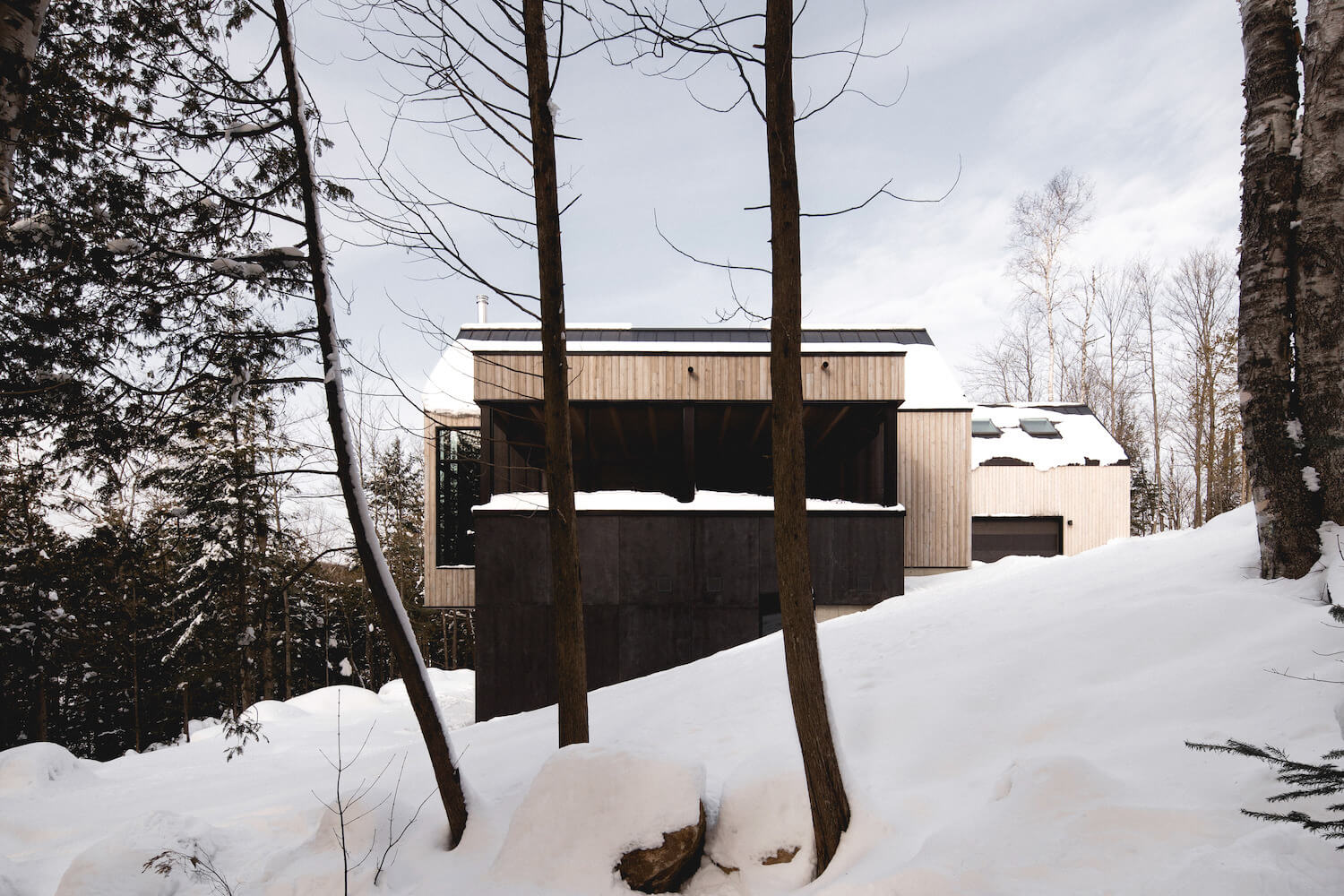















About BOOM-TOWN
Historically, a Boomtown house has been associated with 1890–1920 ‘mushroom’ towns created near industrial complexes and mines. It is easily recognized by its simple facade and square shape. Its roof is flat, or nearly flat, which was an innovation for the time. The popularity of the Boomtown house was mainly due to its increased space and low construction costs.
A century later, l’atelier BOOM-TOWN proposes a rereading of the architecture of human-scale buildings, based on the original principles of the Boomtown house: Simplicity and efficiency. Working with space, light, and matter, l’atelier BOOM-TOWN designs contemporary houses, adapted to modern living.

